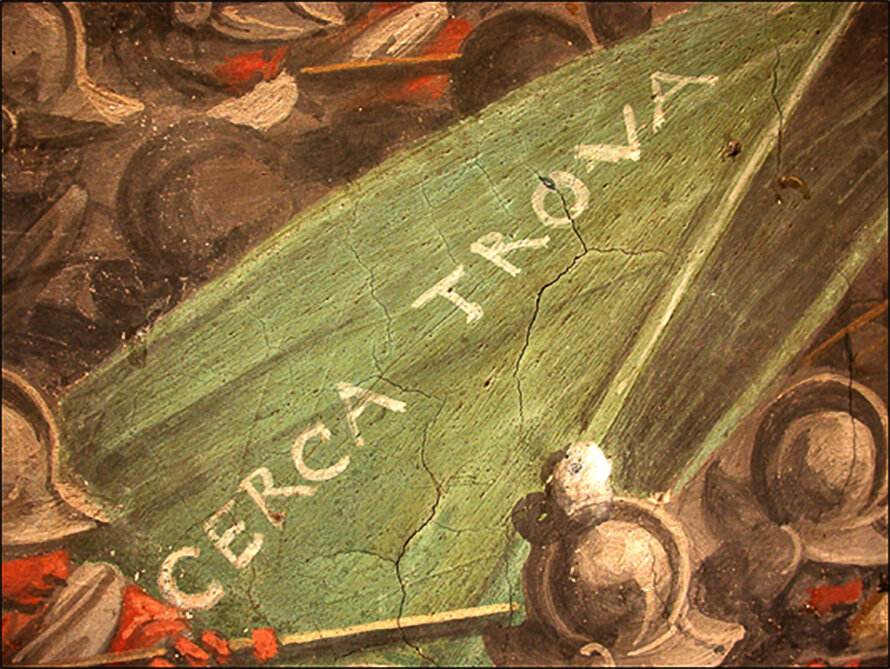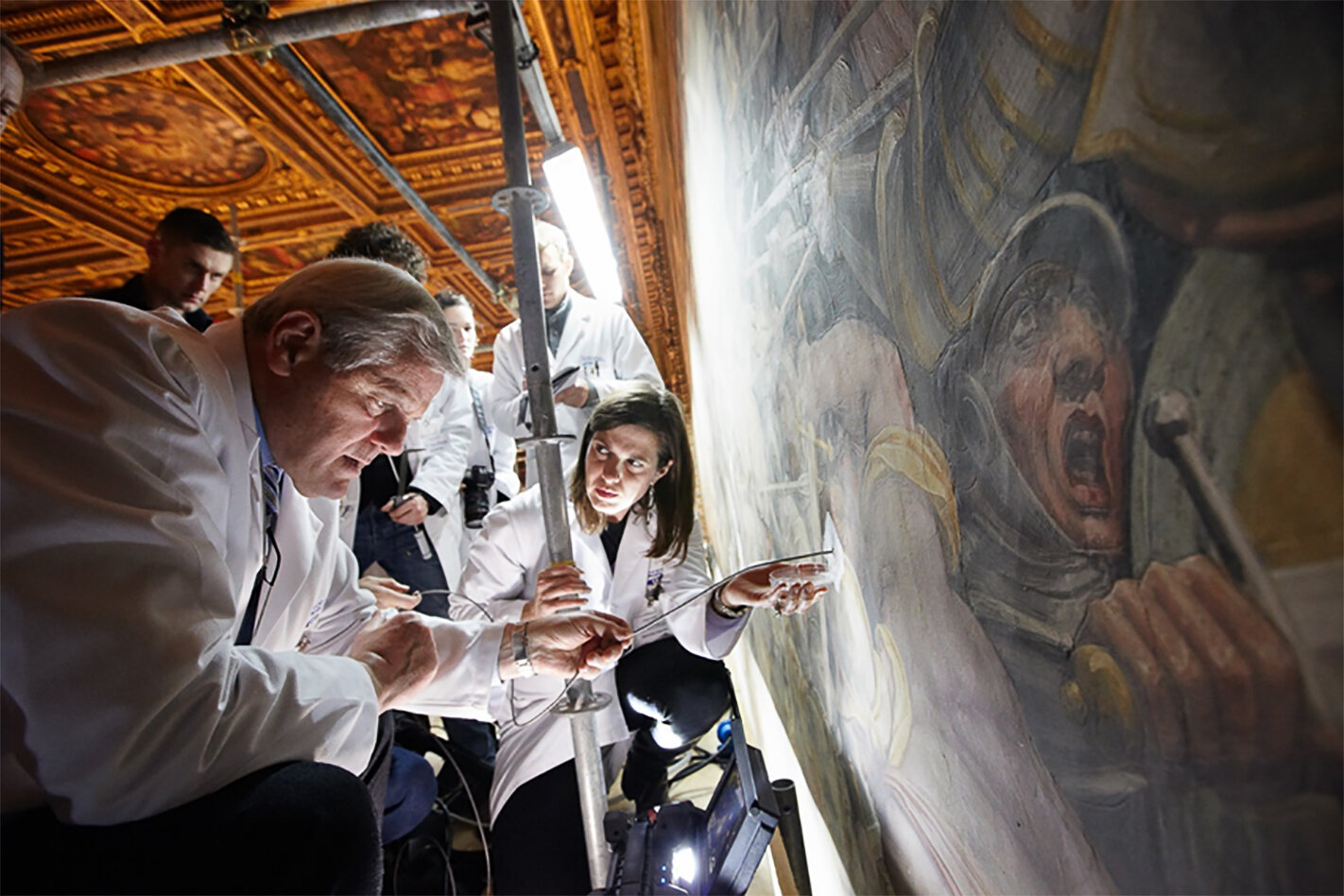The Battle of Anghiari
Leonardo’s Lost Masterpiece
Vasari’s Murals on the East Wall, Hall of the 500
On 29 June 1440, two armies joined battle near the town of Anghiari in Tuscany. On one side was the larger force of Duke Filippo Maria Visconti of Milan, and on the other the army of the Italian League, led by the Florentine Republic. The battle raged for four hours and ended in victory for the League. Over sixty years later, in 1504, Florence’s Gonfaloniere of Justice, Piero Soderini, commissioned Leonardo da Vinci to decorate on of the walls of the newly-built Hall of the Five Hundred (Salone di Cinquecento) in the town hall, the magnificent Palazzo Vecchio. The theme that was chosen was the Battle of Anghiari, in celebration of the achievements of the Republic of Florence. An innovative technique that Leonardo used for this commission involved mixing wax into the paints. After completing a section of the painting he had braziers winched up to it to hasten the drying, but the unintended result was that the wax melted and much of the work ran down the wall to pool on the floor. The fate of the decoration of the opposite was not much more successful: the commission – the Battle of Cascina – had been given to Leonardo’s rival Michaelangelo, but when the latter was summoned to Rome by Pope Julius II to paint the Sistine Chapel, the work was left unfinished, and the sketches were removed piecemeal by visitors. What we know about The Battle of Anghiari we owe to copies that were made by contemporary artists, most important among them a work by Rubens that is now in the Louvre in Paris.
Drawing after Leonardo da Vinci’s lost painting of The Battle of Anghiari Anonymous from the XVI century, reworked by Peter Paul Rubens. Louvre, Inv. N.20271
The scene shows a dramatic clash of four mounted knights fighting for the flag of Anghiari. The history of Florence at this time was marked by shifts of power between the Republic on the one hand and the Medici family on the other. In 1537 the Medicis came to power once more following a military victory by Cosimo I, who was at first Duke of Florence and later Grand Duke of Tuscany. From 1555, Hall of the Five Hundred was extended to accommodate the Duke’s court, and Giorgio Vasari was given a commission to redecorate the walls with a view to removing all traces of the former Republic’s glory. But Vasari is known to have been an admirer of Leonardo, and it is said that, instead of painting directly over what was left of The Battle of Anghiari, he had a new wall constructed in front of it so that the masterpiece, although invisible, would be preserved for posterity.
Cerca Trova “he who seeks shall find.”
Endoscopy investigations on the right panel of the East Wall
In the 1970s, while examining a section of Vasari’s painting from the vantage point of a ladder, the Florentine scientist Maurizio Seracini noticed a legend inscribed on a flag carried by one of the soldiers. It read Cerca trova – “he who seeks shall find.” Taking this to be a veiled reference to the hidden Leonardo masterpiece, Seracini embarked on a quest to find the painting that he believed to be concealed behind Vasari’s mural.
Radar investigation of Vasari’s mural paintings in the Hall of the 500
Seracini’s attempts were unsuccessful until his project, by now abandoned, came to the attention of Loel Guinness, who takes up the story:
The Kalpa Group was then in its infancy, and I was on the lookout for potential collaborators. Maurizio’s hard deductive logic and his own unshakable conviction concerning the continued presence of Leonardo’s fresco in the Hall was simply too intriguing to be left untested. Over a series of meetings, he explained to me in detail the range of non-invasive technologies he wanted to use to locate the piece and assured me that nothing in that magnificent hall would be damaged to conduct his tests. There was something terribly splendid about his plan: we were going to adapt technologies developed to detect the fractures in missile casings, to search instead for a lost masterpiece of the Florentine Renaissance.
The stakes were high, as the technologies Maurizio wanted to exploit did not come cheap, but the potential of the project, and his own infectious conviction, were too compelling to pass it up. So I took the gamble. “You want to look again for the Battle?” I asked him simply. “Of course!” he replied, and the deal was made.
The search for the Battle was a massive project spanning several years. …Working by night, we employed a veritable armory of technologies to remap, in painstaking detail, the entire original Hall as it had been in 1505 when Leonardo started to paint the Battle. Once that virtual reconstruction was complete, and once the project already had substantial discoveries under its belt, it was in a position to be taken over by National Geographic in 2011.








